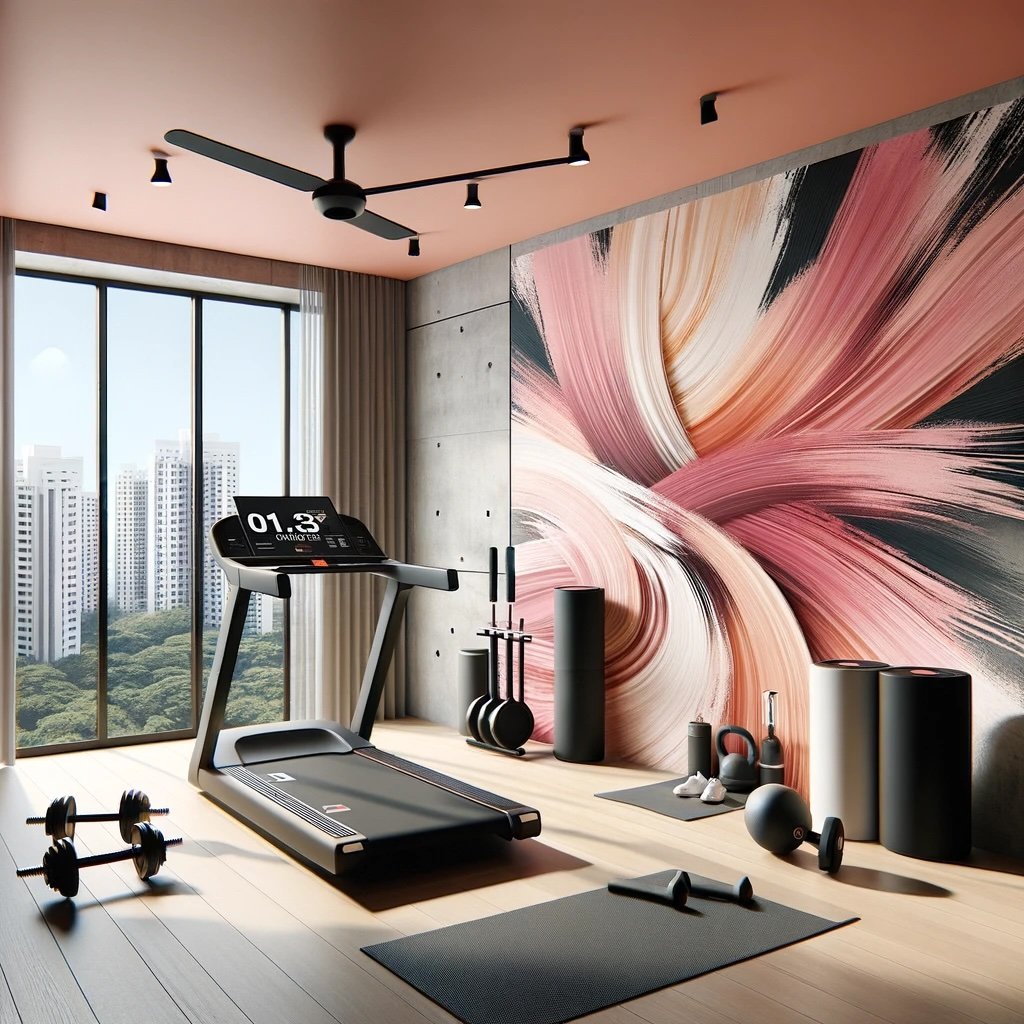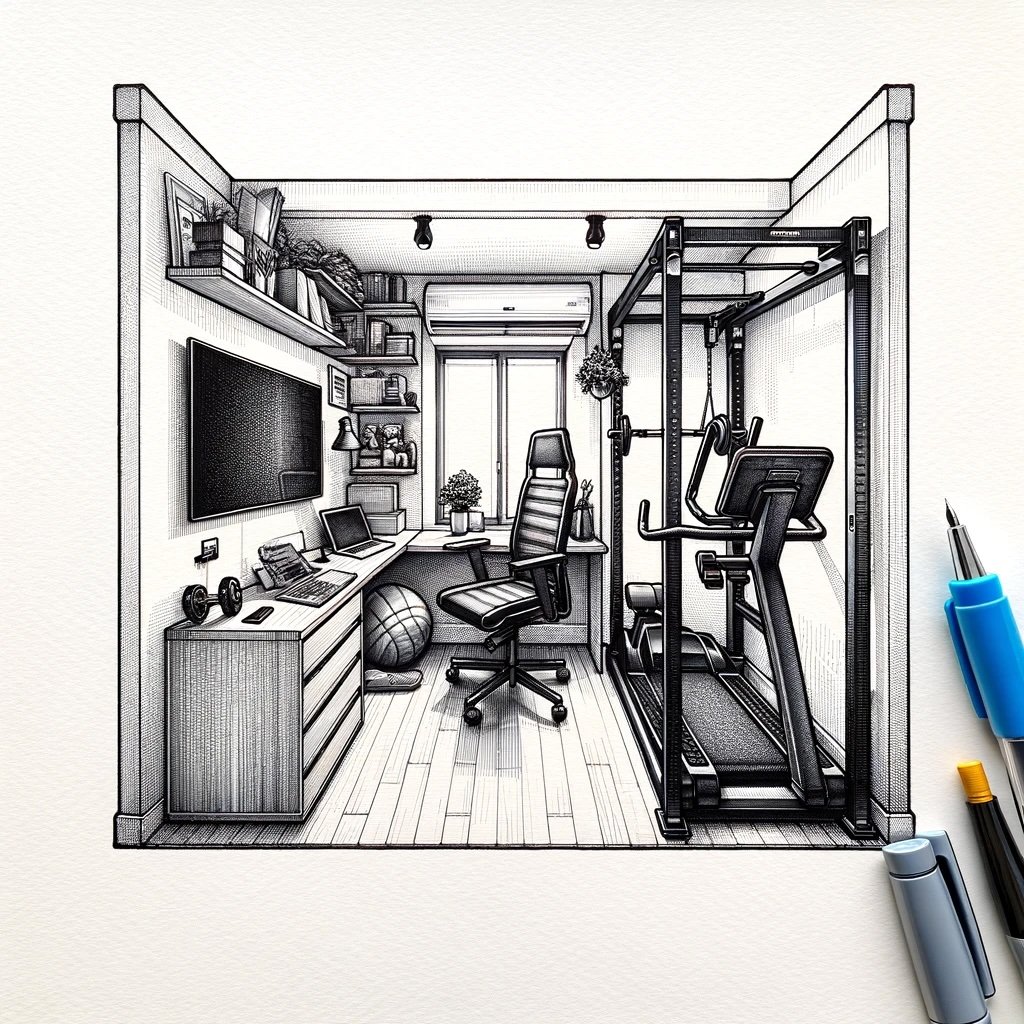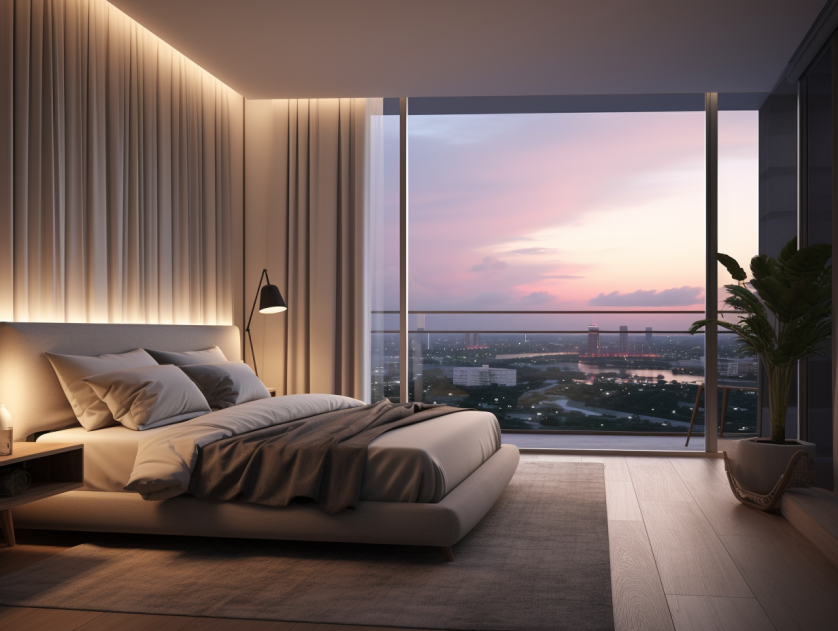Keeping Fit at Home: Understanding Interior Design and Human Behavior
The Evolution of Work-from-Home
As interior designers in Singapore, we've seen a surge in requests for home offices that blend work and life seamlessly. Clients often ask, 'How can I take a work call without disturbing my partner?' or 'Can my office double as a guest room?'
To run from Covid-19, in 2020, the world pivoted overnight to a work-from-home model. A necessity turned lifestyle, but with it, a silent epidemic of sedentary behavior emerged. Recent studies revealed that half of the Singapore population appeared to spend more than 7 hours a day sedentary. Insufficient physical activity is associated with poorer physical and mental health. The post-covid survey shows more than a 30% increase in sedentary behavior among Singaporeans. This shift beckons a reevaluation of our work and movement habits at home.
A reevaluation of our work and movement habits at home is required.
The Sedentary Pitfall of Remote Work
Once a productivity haven, the home office has become a health battleground. The blurred lines between work and rest have led to physical and mental health costs. Dr. Jordan Metzl reminds us, "Movement is medicine," a prescription often neglected in our busy and modern life.
The Paradox of Productivity and Health Decline
In Singapore’s insatiable need to grow the economy, productivity scales to new heights. However, this growth often comes at a hidden cost to physical and mental health. Singapore’s Ministry of Health's reports illuminate a troubling decline in well-being, with work encroaching upon time traditionally reserved for personal care and exercise. Yet, emerging research presents a compelling case: integrating fitness into our everyday lives could be the key to unlocking even greater productivity. Regular physical activity, as endorsed by the World Health Organization’s recommendation of 150 minutes of moderate aerobic activity weekly, not only bolsters health but also enhances workplace efficiency. Integrating 'office work' with 'exercise work' cultivates a harmonious balance, imperative in our relentless pursuit of happiness and success.
Back to Basics
Our ancestors purposed homes for shelter and safety. Work was done elsewhere - out in the fields, clearly separated from home. Today, ‘thanks’ to technology and a pandemic, that separation has been blurred. As work has penetrated our restful sanctuaries, it's become critical to also incorporate rest, healthy eating, and an active lifestyle into our home life.
Farmer Joe was pondering how to break it to his boss about his work-from-home request.
To bring back a healthy balance, we need to consider: How can our homes keep us healthy and fit? Many of us face challenges like limited space and juggling work and home life in the same environment. This is where thoughtful interior design comes into play. By intelligently redesigning our living spaces, we can create areas that are conducive to both work and physical activity. Effective interior design goes beyond aesthetics; it's about enhancing our lifestyle at home, making it healthier and more balanced.
Interior Design, Saving Lives Again
Research in human behavior consistently shows that our environment significantly influences our habits. A study from the University of Minnesota found that well-organized and aesthetically pleasing spaces can lead to better decision-making and more disciplined behavior. "Our surroundings can make it easier or harder to practice self-control," says psychological scientist Kathleen Vohs, who led the study. By thoughtfully altering our interiors, we create an environment conducive to maintaining good habits and tackling difficult tasks. Whether it's designing a clutter-free workspace to enhance focus or organizing a kitchen to promote healthy eating, the design of our living spaces plays a pivotal role in our daily routines. These changes in our immediate environment can act as subtle cues, nudging us towards more productive and healthier behaviors.
Interior designers have a key role to play in this process. They utilise creativity to find solutions for space-related challenges in our homes. They look for innovative ways to revive dead-spaces, transforming our homes into places that encourage movement and well-being. This approach not only makes our homes more functional but also enriches our overall quality of life.
Alter your space: How might we live in homes that help us live, play, rest, work and stay healthy?
Key Points to Promote an Active Lifestyle Through Interior Design
Movement and motion on the wall inspires activity. See WallHub’s offerings for exciting wallpaper like this!
Psychological Impact of Color and Light:
Warm colors and natural light in a living room can energize and motivate exercise routines. "Colors and lighting affect how we feel and act," says a study from the University of Texas. Natural light streaming through large windows can enhance mood and vitality in a living room. Not a lot of windows? No problem - warm colors like orange can energize and motivate exercise routines too! Wallcovering that depicts motion and movement will encourage you to get moving too.
Spatial Organization:
A well-organized space with a designated exercise area can significantly influence our workout habits. Research conducted by Cornell University, a neatly organized room with a designated area for exercise can significantly influence our workout habits. For example, a compact apartment can have a foldable wall-mounted desk in the home office, which can be stowed away after work, creating a small workout area.
Having a work-out routine that is light or free of equipment works best in small areas. Physiotherapist, Shern Lim of Work Lift Balance, has a unique functional training routine that helps people stay ‘stacked’ and strong. Her methodology almost requires no equipment at all, and is perfect for the home environment.
Lighter weights can achieve strength gains when used with consistency and intention. Just by paying attention to the alignment and connection between your body and your breath greatly benefits health and well-being.
- Shern Lim, Work Lift Balance giving her view on training program that does not require heaps of gym equipment.
Jackie was overzealous with the renovation plans. She had forgotten that her condominium had a gym at the clubhouse.
Again, Jackie went overboard with the greenwall.
Nature and Biophilic Design:
Incorporating elements like indoor plants or natural materials can promote mental health and a healthier lifestyle. Incorporating a small vertical garden in the balcony area of an apartment brings a sense of nature indoors, offering a calming environment that encourages mindfulness and stress-reduction practices like yoga.
Vertical Green’s HyGro™Moss offers some low maintenance green goodness into the space.
Ergonomics and Furniture Design:
Ergonomic furniture supports healthier daily routines by maintaining good posture and reducing physical strain. Using an ergonomic chair, like the ones from Hinomi, and adjustable standing desk in the home office can promote better posture and reduce the strain of sitting for long hours, encouraging more frequent standing or stretching breaks. To break out of the sedentary habit, one will still need to vacate the seat. Have technology help you with these reminders.
Rick is very, very happy with his purchase. Comfortable for his lumbar, not so comfortable for his wallet.
Smart automated curtains for the view, and static curtains over the bedhead. Why not.
Technology Integration for Habit Formation:
Smart home technologies can promote healthy habits through exercise reminders or break prompts. Smart home systems in a home can be programmed to provide reminders to take breaks for stretching or short workouts, effectively integrating healthy habits into daily routines. Perhaps even program your Aratamete curtains to be pulled away automatically when the sun rises, in time for your early morning jog!
Accessibility and Inclusivity in Design:
Designing for all ages and abilities fosters an environment where everyone can engage in physical activity. Designing an apartment with wide doorways and minimalistic furniture ensures ease of movement for all ages and abilities.
Little Sam and Ah-Ma has all the space required to practice their cartwheels.
Winning the battle for better health: "Work-Out From Anywhere" (WOFA)
The WOFA movement will be a concept born from BuildBuilt’s Work-Out From Anywhere idea. Hopefully, this will not just be a trend; but a healthy necessity in our evolving lifestyle to keep up with the changing world. The principles outlined above lay the groundwork for transforming our living spaces into active zones, promoting health and vitality. This is the future of interior design – a future that doesn't just look good but feels good.
References:
Health Promotion Board, "Study on Sedentary Behavior Among Singaporeans Post-Covid" (2020).
Dr. Jordan Metzl, "The Importance of Movement in Modern Healthcare" (2021).
Ministry of Health, Singapore, "Report on Physical Health and Productivity" (2022).
World Health Organization, "Global Recommendations on Physical Activity for Health" (2022).
University of Texas Study, "Impact of Color on Marketing" (2016).
Cornell University Research, "Spatial Configuration and Human Behavior" (2021).
Terrapin Bright Green, "14 Patterns of Biophilic Design" - Link.
Harvard Health Publishing, "The Importance of Ergonomics in the Workplace" (2022).
MIT Technology Review, "How Smart Homes Could Revolutionize Our Daily Routine" (2023).
Journal of Inclusive Design and Accessibility, "Inclusive Interior Design: Creating Spaces for Everyone" (2022).
Kathleen Vohs et al., University of Minnesota, "Physical Order Produces Healthy Choices, Generosity, and Conventionality, Whereas Disorder Produces Creativity" (2013).










